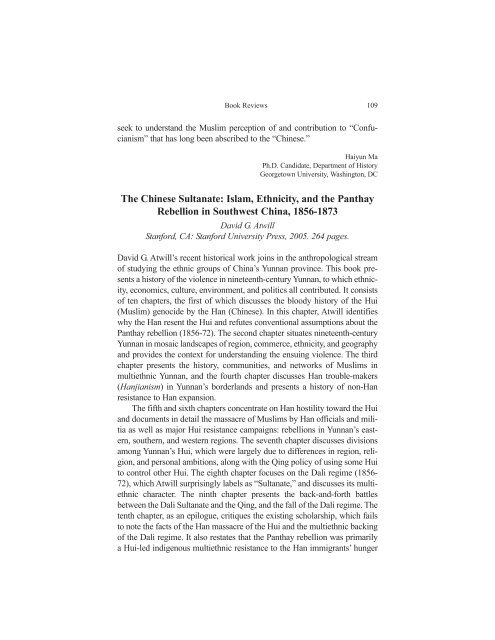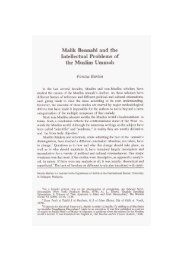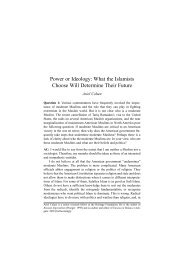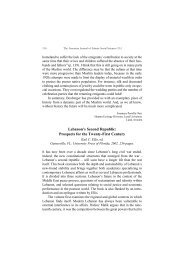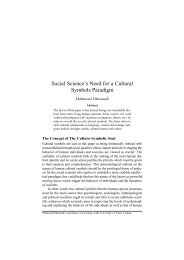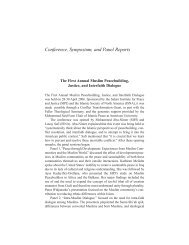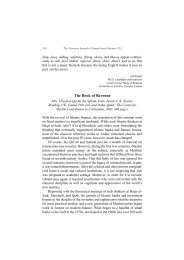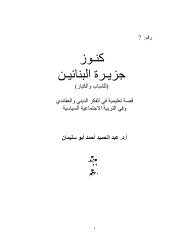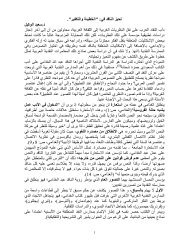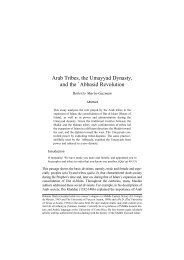The Chinese Sultanate: Islam, Ethnicity, and the ... - I-Epistemology
The Chinese Sultanate: Islam, Ethnicity, and the ... - I-Epistemology
The Chinese Sultanate: Islam, Ethnicity, and the ... - I-Epistemology
You also want an ePaper? Increase the reach of your titles
YUMPU automatically turns print PDFs into web optimized ePapers that Google loves.
Book Reviews 109<br />
seek to underst<strong>and</strong> <strong>the</strong> Muslim perception of <strong>and</strong> contribution to “Confucianism”<br />
that has long been abscribed to <strong>the</strong> “<strong>Chinese</strong>.”<br />
Haiyun Ma<br />
Ph.D. C<strong>and</strong>idate, Department of History<br />
Georgetown University, Washington, DC<br />
<strong>The</strong> <strong>Chinese</strong> <strong>Sultanate</strong>: <strong>Islam</strong>, <strong>Ethnicity</strong>, <strong>and</strong> <strong>the</strong> Panthay<br />
Rebellion in Southwest China, 1856-1873<br />
David G. Atwill<br />
Stanford, CA: Stanford University Press, 2005. 264 pages.<br />
David G. Atwill’s recent historical work joins in <strong>the</strong> anthropological stream<br />
of studying <strong>the</strong> ethnic groups of China’s Yunnan province. This book presents<br />
a history of <strong>the</strong> violence in nineteenth-century Yunnan, to which ethnicity,<br />
economics, culture, environment, <strong>and</strong> politics all contributed. It consists<br />
of ten chapters, <strong>the</strong> first of which discusses <strong>the</strong> bloody history of <strong>the</strong> Hui<br />
(Muslim) genocide by <strong>the</strong> Han (<strong>Chinese</strong>). In this chapter, Atwill identifies<br />
why <strong>the</strong> Han resent <strong>the</strong> Hui <strong>and</strong> refutes conventional assumptions about <strong>the</strong><br />
Panthay rebellion (1856-72). <strong>The</strong> second chapter situates nineteenth-century<br />
Yunnan in mosaic l<strong>and</strong>scapes of region, commerce, ethnicity, <strong>and</strong> geography<br />
<strong>and</strong> provides <strong>the</strong> context for underst<strong>and</strong>ing <strong>the</strong> ensuing violence. <strong>The</strong> third<br />
chapter presents <strong>the</strong> history, communities, <strong>and</strong> networks of Muslims in<br />
multiethnic Yunnan, <strong>and</strong> <strong>the</strong> fourth chapter discusses Han trouble-makers<br />
(Hanjianism) in Yunnan’s borderl<strong>and</strong>s <strong>and</strong> presents a history of non-Han<br />
resistance to Han expansion.<br />
<strong>The</strong> fifth <strong>and</strong> sixth chapters concentrate on Han hostility toward <strong>the</strong> Hui<br />
<strong>and</strong> documents in detail <strong>the</strong> massacre of Muslims by Han officials <strong>and</strong> militia<br />
as well as major Hui resistance campaigns: rebellions in Yunnan’s eastern,<br />
sou<strong>the</strong>rn, <strong>and</strong> western regions. <strong>The</strong> seventh chapter discusses divisions<br />
among Yunnan’s Hui, which were largely due to differences in region, religion,<br />
<strong>and</strong> personal ambitions, along with <strong>the</strong> Qing policy of using some Hui<br />
to control o<strong>the</strong>r Hui. <strong>The</strong> eighth chapter focuses on <strong>the</strong> Dali regime (1856-<br />
72), which Atwill surprisingly labels as “<strong>Sultanate</strong>,” <strong>and</strong> discusses its multiethnic<br />
character. <strong>The</strong> ninth chapter presents <strong>the</strong> back-<strong>and</strong>-forth battles<br />
between <strong>the</strong> Dali <strong>Sultanate</strong> <strong>and</strong> <strong>the</strong> Qing, <strong>and</strong> <strong>the</strong> fall of <strong>the</strong> Dali regime. <strong>The</strong><br />
tenth chapter, as an epilogue, critiques <strong>the</strong> existing scholarship, which fails<br />
to note <strong>the</strong> facts of <strong>the</strong> Han massacre of <strong>the</strong> Hui <strong>and</strong> <strong>the</strong> multiethnic backing<br />
of <strong>the</strong> Dali regime. It also restates that <strong>the</strong> Panthay rebellion was primarily<br />
a Hui-led indigenous multiethnic resistance to <strong>the</strong> Han immigrants’ hunger
110 <strong>The</strong> American Journal of <strong>Islam</strong>ic Social Sciences 23:3<br />
for food, l<strong>and</strong>, women, money, <strong>and</strong> power in a nineteenth-century Qing frontier<br />
area at a time when <strong>the</strong> central government was dysfunctional.<br />
This book is superb in explaining <strong>the</strong> Panthay rebellion. Atwill positions<br />
<strong>the</strong> violence in its ethnically, religiously, geographically, commercially, <strong>and</strong><br />
politically interwoven local context <strong>and</strong> thus avoids <strong>the</strong> reductionist <strong>and</strong> intuitional<br />
discourses often used to address violence in ethnic <strong>and</strong> cultural terms<br />
alone. He captures <strong>the</strong> tension between large-scale invading Han immigrants<br />
<strong>and</strong> local indigenous groups by tracing its trajectory <strong>and</strong> presenting patterns<br />
of historical violence between local ethnic groups <strong>and</strong> immigrant Hans. <strong>The</strong><br />
Panthay rebellion represents <strong>the</strong> zenith of this kind of violence, <strong>and</strong> Atwill<br />
identifies <strong>the</strong> social <strong>and</strong> materialistic roots for <strong>the</strong> Hans’ hatred <strong>and</strong> attempt to<br />
exterminate <strong>the</strong> Hui. Ano<strong>the</strong>r virtue of this book is Atwill’s juxtaposition of<br />
identity <strong>and</strong> violence, such as linking <strong>the</strong> Panthay rebellion to Muslim ethnic<br />
<strong>and</strong> religious identities during a time of crisis (pp. 155-60).<br />
<strong>The</strong> only question I have is, in addition to known Manchu-Han official<br />
prejudice toward <strong>the</strong> Hui in nineteenth-century Yunnan, what was <strong>the</strong> state’s<br />
degree of political complicity? Had <strong>the</strong> author focused more on <strong>the</strong> patterns<br />
<strong>and</strong> histories of administrations (e.g., <strong>the</strong> st<strong>and</strong>ard province-county style of<br />
interior regions, subprefecture [ting] mixed with administrations <strong>and</strong> regulations,<br />
<strong>and</strong> indigenous local autonomies), why <strong>the</strong> state categorized Yunnan’s<br />
subject populations of Yunnan into three (Han, Hui, <strong>and</strong> Yi), <strong>and</strong> why it tolerated<br />
<strong>the</strong> massacres, <strong>the</strong> Han policy of slaughtering <strong>the</strong> Hui would have<br />
been more comprehensible. I believe that categorizing Yunnan’s populations<br />
seems to be related to <strong>the</strong>se administrative trivia <strong>and</strong> <strong>the</strong> need to st<strong>and</strong>ardize<br />
those differences that allowed <strong>the</strong> state to tolerate such events.<br />
Administrative differences make sense to both Hui identity debates <strong>and</strong><br />
Han identity. Atwill carefully categorizes Huimin <strong>and</strong> Mumin, respectively,<br />
as “ethnic” (Hui) <strong>and</strong> “religious” (Muslim) identities (p. 157). <strong>The</strong>re is no<br />
problem with translating <strong>the</strong> latter as religious identity, for it is probably<br />
derived from <strong>the</strong> Arabic term mu’min (believer). However, his treatment <strong>and</strong><br />
reading of huimin as ethnic identity is problematic. Ma Rulong’s justification<br />
for surrendering, that “<strong>the</strong> state had treated its people (min) benevolently”<br />
(p. 156), seems to suggest that Huimin (Hui commoner) primarily<br />
expressed <strong>the</strong> person’s legal status as min (commoner), despite <strong>the</strong> culturalethnic<br />
modification (Hui). Interestingly enough, in contrast to Ma Rulong’s<br />
identification of <strong>the</strong> root of <strong>the</strong> Hui genocide with <strong>the</strong> Yunnan Han, Du<br />
Wenxiu attributed it to <strong>the</strong> alien Manchu ruler who refused to be a [Hui] min<br />
subject of <strong>the</strong> Qing <strong>and</strong> tried to establish a new regime for people of different<br />
cultures (jiaomin), among whom were <strong>the</strong> Mumin (Muslims).
Book Reviews 111<br />
Administrative differentiations in Yunnan’s populations equally make<br />
sense to <strong>the</strong> self-perceived Han identity. Since <strong>the</strong> Han, new or old, belonged<br />
to <strong>the</strong> st<strong>and</strong>ard administration of interior regions <strong>and</strong> were <strong>the</strong> largest group<br />
of min subject populations, it is not surprising that <strong>the</strong>y equated <strong>the</strong>mselves<br />
with <strong>the</strong> whole loyal commoner population. Thanks to Yunnan’s multiethnic<br />
setting, <strong>the</strong> state also overlapped <strong>the</strong> Han with <strong>the</strong> commoner so that,<br />
as Atwill discusses in <strong>the</strong> fourth chapter, it expressed its early concern over<br />
trouble-maker commoners via an ethnic term: Han-jian (Han traitor). Later<br />
on, along with <strong>the</strong> accelerated violence directed against <strong>the</strong> minority populations,<br />
<strong>the</strong> Han opportunistically identified <strong>the</strong>mselves as good commoners<br />
<strong>and</strong> allied <strong>the</strong>mselves with <strong>the</strong> state.<br />
Attacking <strong>and</strong> eliminating non-Han groups thus served <strong>the</strong> interests of<br />
both <strong>the</strong> Qing, who desired to st<strong>and</strong>ardize <strong>the</strong> local administrations, <strong>and</strong> <strong>the</strong><br />
Han, who desired to rob <strong>the</strong> indigenous peoples. Simultaneously, by equating<br />
<strong>the</strong>mselves with commoners, <strong>the</strong> ethnic Han alienated <strong>and</strong> excluded <strong>the</strong><br />
Hui, many – if not all – of whom were actually commoner subjects under<br />
st<strong>and</strong>ard administrations, from [equal] commoner status. <strong>The</strong> Qing pacification<br />
of <strong>the</strong> Panthay rebellion, as this reviewer argues, <strong>and</strong> <strong>the</strong> subsequent<br />
administrative reform was, in this sense, a great victory for <strong>the</strong> state at <strong>the</strong><br />
political level <strong>and</strong> for Yunnan’s Han population at <strong>the</strong> local ethnic level.<br />
<strong>The</strong> book is of great help in underst<strong>and</strong>ing ethnic <strong>and</strong> religious revolts<br />
<strong>and</strong> violence in concrete terms in imperial as well as modern China, <strong>and</strong> for<br />
<strong>the</strong> crimes committed by <strong>the</strong> immigrant Han in China’s frontier <strong>and</strong> ethnic<br />
regions in <strong>the</strong> name of state. It also reveals long-term challenges for non-Han<br />
peoples to be considered as equal subjects in a Han-dominated polity. This<br />
book deserves serious attention from students of imperial <strong>Chinese</strong> history,<br />
ethnic studies, <strong>and</strong> frontier studies, as well as policymakers.<br />
Haiyun Ma<br />
Ph.D. C<strong>and</strong>idate, Department of History<br />
Georgetown University, Washington, DC<br />
<strong>The</strong> History of Women’s Mosques in<br />
<strong>Chinese</strong> <strong>Islam</strong>: A Mosque of <strong>The</strong>ir Own<br />
Maria Jaschok <strong>and</strong> Shui Jingjun<br />
London: Routledge & Curzon Press, 2000. 361 pages.<br />
This remarkable collaboration of primarily Maria Jaschok <strong>and</strong> Shui Jingjun<br />
(with contributions from nine o<strong>the</strong>r mostly Muslim <strong>Chinese</strong> women who are<br />
duly acknowledged), contains a wealth of information on a subject that most


